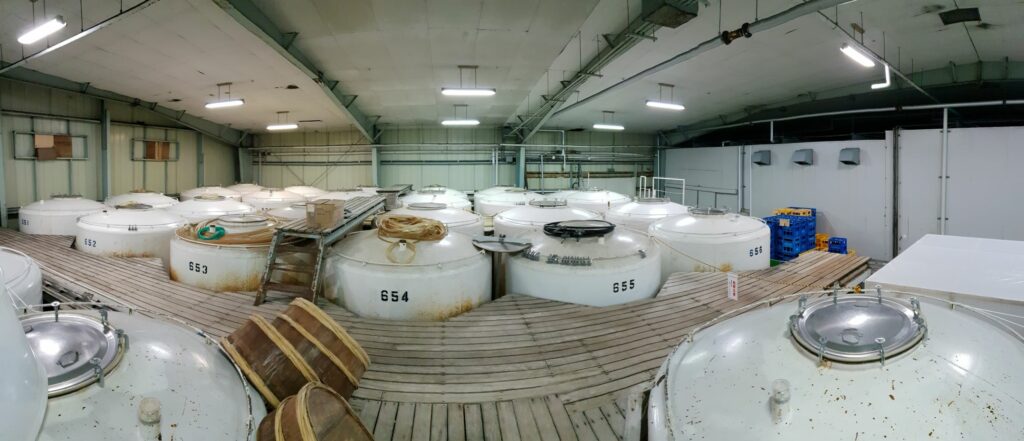Sake brewing process

Rice, cooking and Koji-making process
In general, sake production is more similar to beer production because rice for sake production needs to be boiled. Just like barley is boiled in the production of beer. The whole brewing process is taken care of by the head brewer – toji – and his team. At the beginning you have brown rice, which is ground in the mills to the required percentage. Rice loses some of its volume and reveals a white starch core. Subsequently, they must rinse and soak this rice in a sake brewery to get rid of the rice dust that has stuck to it, and at the same time they need water to be absorbed before cooking for rice to cook better and evenly. This is followed by steaming and then cooling. Traditionally, rice was spread on the ground on some linen sheets to cool there. Today, it is modern to use a machine that spreads it evenly and cools it down at the same time. The rice is then taken and moved to the koji room. Here it is spread on a cloth on a large table and then sprinkled with spores of the koji fungus. It is then wrapped in a bun-like shape and a thermometer is inserted. It is left for two days and the temperature and humidity in the room and in the rice are checked to ensure the right environment for koji growth.
Creating a starter and fermentation process
After two days, they transfer this batch of koji rice to a smaller vat. They add cooked rice, water and yeast to it and let it ferment at low temperatures. When this fermentation is made, they pump it into a larger tank and add a double dose of cooked rice, koji rice and water. The next day they add twice the amount of rice, koji rice and water than the day before. Then they let everything ferment for one day and then add twice the amount of everything than before. All this so that the koji fungus has enough rice to convert starches into sugars and so that the yeast has enough sugar to convert it into alcohol. This process is called parallel fermentation, where, unlike the production of other types of fermented alcoholic beverages, starch is converted into sugars and sugar into alcohol at the same time. In this way, everything is left to ferment for two to four weeks, depending on the temperature.
Pressing, diluting, ageing and bottling
Once the fermentation process is complete, pressing is required. The contents of the vat are pumped into bags. These are then pressed either horizontally or vertically. For higher-quality sake, the method of self-flow is also used, when the canvas bags are filled, which are hung in a tub, and it is waited for the sake to flow out of the bags. Subsequent filtration is through activated carbon filters. This is followed by pasteurization before maturation in stainless steel tanks. Sake is aged in stainless steel tanks for about three to six months. After this time, it goes through another pasteurization. The next step is dilution from twenty percent to the desired value of about fifteen to sixteen percent alcohol and bottling. Then all that remains is the distribution of sake to customers and its drinking.